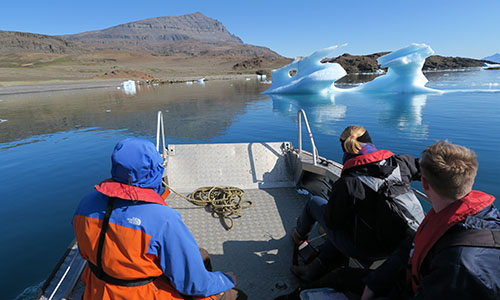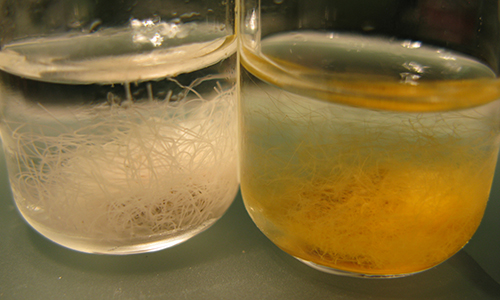

Vores planet er beboet af et enormt antal mikroorganismer. Deres aktivitet er essentiel for det globale stofkredsløb og for sundhed og funktion af økosystemer og organismer – fra planter til mennesker. Dertil kommer, at vi udnytter mikrobielle processer og produkter i en lang række industrielle processer så som spildevandsrensning, produktion af energi, fødevareproduktion og bioteknologi.
På Institut for Biologi undersøger vi de mekanistiske detaljer bag mikrobielle processer i naturlige og i menneskeskabte systemer, og vi studerer de mikroorganismer, der driver dem. Denne viden er fundamental for at forstå, hvordan stofkredsløbet påvirkes af ydre påvirkninger som for eksempel klimatiske forandringer, eller hvordan vi kan påvirke mikrobielle processer til at fungere til vores fordel i forbindelse med, eksempelvis, kvælstoffjernelse under spildevandsrensning eller til begrænsning af produktion af svovlbrinte i kloaker og i oliefelter.
Vores forskning spænder over alle niveauer af biologisk organisation fra cellulære processer, via mikrobielle samfund og hele økosystemer, til det globale stofkredsløb.
Jeg forsker i evolutionsøkologi og genetik og interesserer mig for gruppeliv, samarbejde og parringssystemer, genomiske konsekvenser af socialitet og indavlede parringssystemer, genetiske og ikke-genetiske processer involveret i tilpasning. Jeg er professor ved og centerleder af Center for Ecological Genetics (EcoGenetics) på Institut for Biologi. Her undersøger vi forholdet mellem genetisk diversitet og funktionelle reaktioner. Vi sigter mod at forudsige insekters fremtidige udbredelse og ydeevne og opretholdelse af populationens genetiske mangfoldighed og vil give værktøjer til at udvikle effektive forvaltningspraksisser i lyset af de igangværende globale forandringer.
Jeg forsker i mikrobiel økologi, dvs. den gensidige påvirkning mellem mikroorganismer og deres omgivelser. Jeg er en del af Center for Elektromikrobiologi, hvor vi forsker i mikroorganismer der transporterer elektroner og udveksler dem med omgivelserne , specielt med fokus på kabelbakterierne. Jeg lavede min ph.d. i udvikling af en mikrosensor for metan og var teknisk leder i opstarten af mikrosensor-firmaet Unisense A/S og har derfor en del teknisk og kommerciel erfaring.
Mit forskningsområde er marin biogeokemi med specielt henblik på mikrobiologiske og kemiske processer i havbunden og deres lokale og globale betydning. Vi anvender blandt andet eksperimenter med radioaktive isotoper kombineret med kemiske analyser til at spore stofomsætninger og beregne deres hastighed. Vi anvender også modelværktøjer og databaser for at forstå reguleringen af havbundens stofkredsløb i samspil med økologi og klima.
Jeg er mikrobiel økolog og forsker i økofysiologi og evolution af mikroorganismer involveret i stofkredsløb og i deres interaktioner med eukaryote værter. Mine to fokusområder er Elektromikrobiologi, især hvordan elektriske kabelbakterier fungerer og deres rolle i miljøet; og Mikrobielle Symbioser, især mellem insekter, bakterier og svampe, deres evolution og funktion, samt sekundærmetabiloter og det kemiske mikromiljø i værtsdyr.